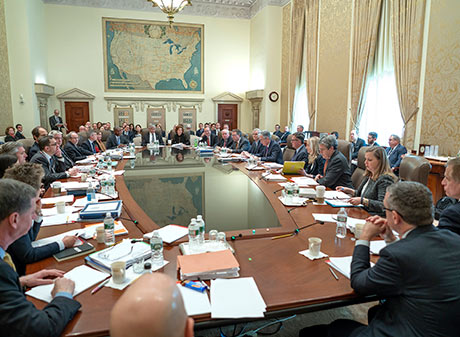The FOMC: Too Little Too Late?
The Federal Open Market Committee (FOMC) completes the first scheduled meeting of 2022 today. The FOMC gathers for two day meetings eight times each calendar year. They are the governing committee for monetary policy in the United States. Their primary objectives are to promote price stability and full employment. By price stability, we are talking about controlling inflationary pressures. Inflation has many definitions, but the one most commonly used is the consumer price index (CPI).
Full employment can be achieved by best utilizing all available participants in the domestic labor pool. The balance between full employment and price stability has historically been described by the Phillips Curve. As the pool for available workers gets drained, it takes higher wages to attract (and retain) the best talent. This purchasing power then translates into increased demand for products and services - resulting in an increase in CPI. This feedback loop can be several months in the cycle.

The FOMC Has Two Major Levers
The FOMC has two major levers to "pull" when implementing monetary policy: (1) target interest rates on short term Treasuries and (2) Treasury purchases or sales. Although the FOMC is scheduled to meet about every six weeks to review current economic conditions and decide upon what (if any) adjustments to make in monetary policy, they also have the option of making policy decisions outside of the regularly scheduled meetings. These may be referred to as ad-hoc meetings that are required when there is a perceived "shock" to economic system.
The asset purchase activities have been referred to as quantitative easing - or QE. We have seen QE1, QE2, QE3, and QE4 since 2007. These bond purchases are designed to maintain - or increase - the price of bonds in an effort to keep yields low. The FOMC is in the process of winding down their QE activities before engaging in quantitative tightening. If (more like when) quantitative tightening begins, the FOMC will be selling assets and yields will likely rise.
In addition to ad-hoc meetings, the FOMC has the ability to change short term yields in increments of more than 0.25%. This may be required if they believe that they may be too late in their actions, or that a more aggressive medicine is needed for the economic ailment du jour.
Goldilocks And The Three Bears
The ageless story of a young girl wandering into the home of the three bears is highly applicable to investor reactions to monetary policy actions by the FOMC. The first porridge sampled by Goldilocks was too hot for her taste. The second was too cold. Finally, the third was "just right." Investors do not like uncertainty - and they especially do not enjoy surprises from governing bodies like the FOMC. The curve above shows the current US Treasury yield curve in navy contrasted with the highest sloping curve over the past 20+ years and the lowest sloping curve during that period.
It appears that the current yield curve is neither too hot nor too cold, but perhaps not far from just right.
Resources
https://en.wikipedia.org/wiki/Quantitative_easing
https://www.federalreserve.gov/monetarypolicy/fomccalendars.htm
https://www.economicshelp.org/blog/1364/economics/phillips-curve-explained/


Comments
Post a Comment